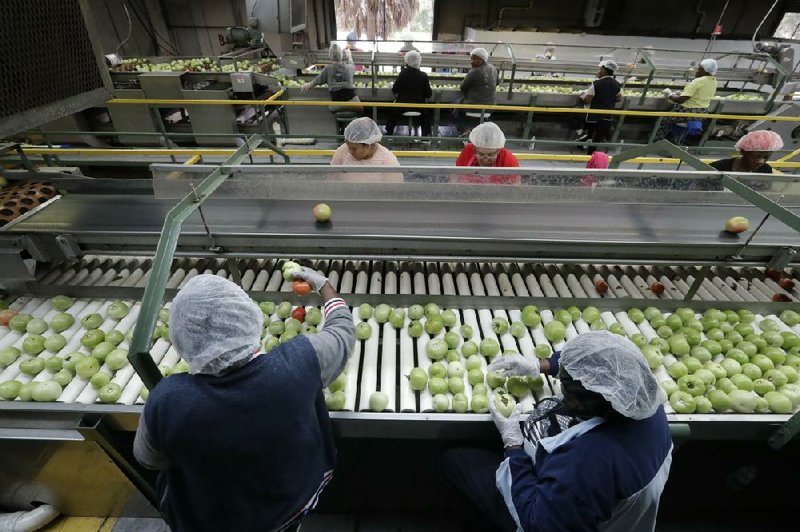WASHINGTON -- U.S. producer prices climbed last month at the fastest pace since October 2018 as higher prices for services more than offset a drop in the cost of energy.
The Labor Department said Wednesday that its producer price index, which measures inflationary pressures before they reach the consumer, jumped 0.5% in January after rising 0.2% in December. The monthly increase was much bigger than economists expected.
Over the past year, wholesale prices are up 2.1%.
Excluding volatile food and energy prices, so-called core producer inflation rose 0.5% in January from December and 1.7% from January 2019, topping all forecasts in a Bloomberg survey of economists.
The Labor Department said much of a 0.7% January increase in services prices came from higher markups for clothes, jewelry, shoes and accessories.
Energy prices dropped 0.7% last month, pulled down by a 1.5% decrease in gasoline prices.
Food prices rose 0.2% in January. But the price of eggs plummeted 42.4% last month, the most in records dating back to 1937.
Producer prices excluding food, energy, and trade services -- a measure preferred by economists because it strips out the most volatile components -- rose 0.4% from the previous month, the most since April, and 1.5% from a year earlier.
Last week, the Labor Department reported that consumer prices blipped up 0.2% last month and rose 2.5% over the past year. The Federal Reserve aims to keep annual consumer inflation around 2%.
In January, 90% of the increase in final demand prices was caused by the jump in services costs. Those prices reflected a record 10.3% surge in margins at retailers of apparel, jewelry, footwear and accessories. This outweighed record declines in freight and cargo transportation and airline passenger services that may reflect the fallout from the coronavirus.
The Labor Department reported last week that U.S. consumer prices rose modestly last month, pushed down by falling gasoline prices.
The government's consumer price index blipped up 0.1% in January after rising 0.2% in December. Over the past year, consumer inflation is up 2.5%, biggest gain since October 2018.
Excluding volatile food and energy prices, so-called core consumer inflation rose 0.2% in January and 2.3% over the past year. Gasoline prices dropped 1.6% in January after surging 3.1% in December. They are up 12.8% over the past year.
Food prices posted an annual increase of 1.8% on a 3.1% jump in restaurant prices. New-car prices were up 0.1% over the past year; used-car prices dropped 2%. Medical care rose 5.1% from January 2019.
Information for this article was contributed by Paul Wiseman of The Associated Press and by Reade Pickert and Chris Middleton of Bloomberg News.
Business on 02/20/2020
